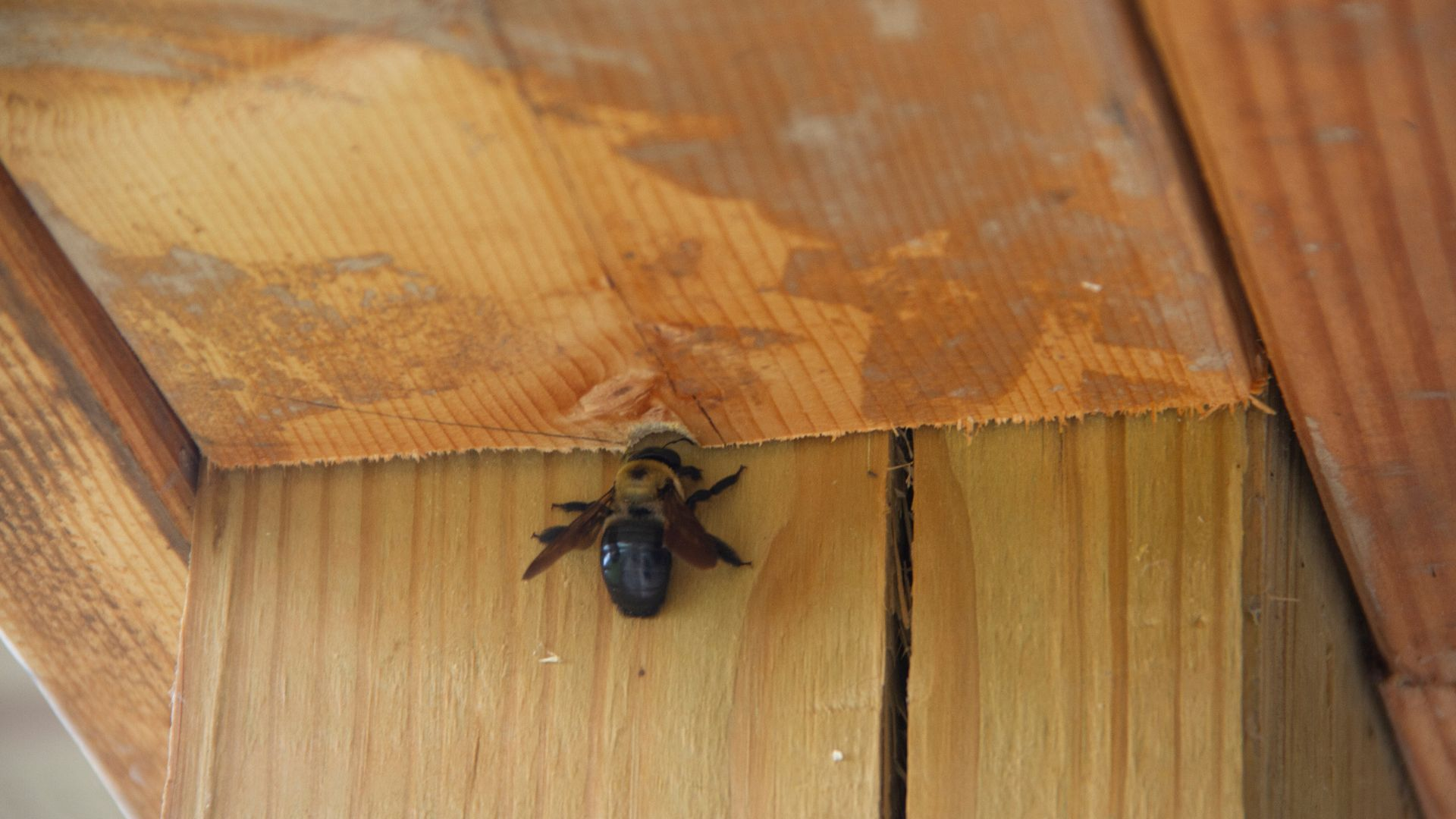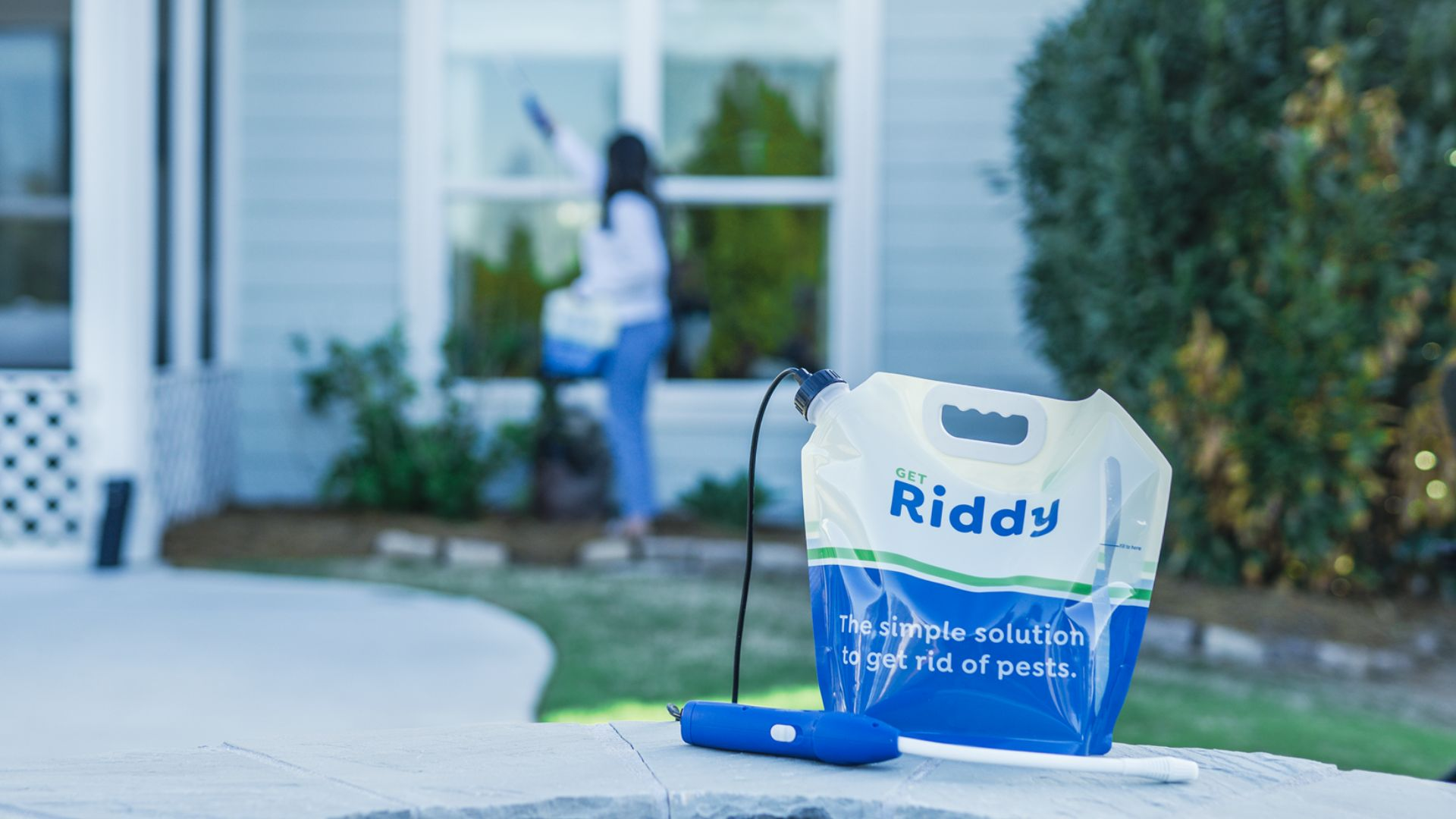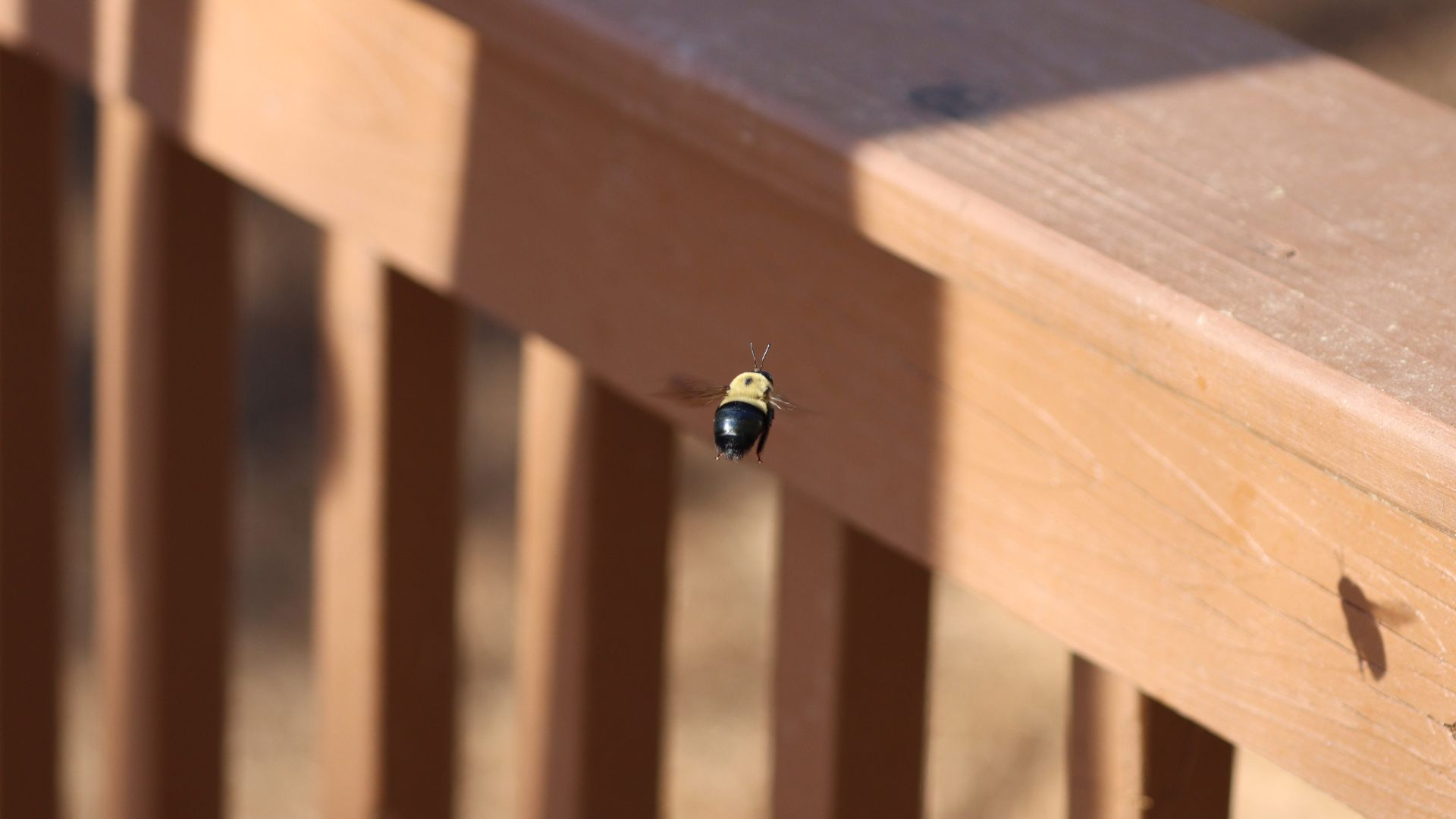
Wood structures in your yard or home can be beautiful, bold statements of your personality. Maintaining those structures can also be a challenge if wood-boring insects have found your property. Central to these concerns are carpenter bees, known for their habit of drilling into wood to make homes for their larvae.
The damage created by a single carpenter bee may not be catastrophic, but an unsupervised infestation can foster significant decay over time. Carpenter bee damage also causes the appearance of your home and property to become unsightly.
For homeowners aiming to combat—or better yet, prevent—these busy drillers, employing a carpenter bee spray, such as those offered by Riddy, is a vital annual task during carpenter bee season.
This guide is tailored for those who prefer taking control of their home and garden maintenance, ensuring a pest-free living space.

Before addressing infestations, it’s critical to identify these trespassing woodworkers. Carpenter bees are usually larger than typical bees in your area. Their distinctive black bodies, sometimes with a metallic sheen, give them an imposing appearance.
They're also visibly fuzzy, with a bright yellow stripe across their thorax, which can lead to misconceptions about them being bumblebees. The most significant difference is that carpenter bees can cause structural issues by nesting in wood.
They may not be as dangerous to your home as termites, but they can quickly ruin the appearance of your wooden structures!
The most obvious sign is visual. If you see bees that match the carpenter bee description flying around the perimeter of your home, you might have an infestation on your hands.
Look for holes in wood, about the size of a dime, with a clean-cut edge. These are the entry points carpenter bees drill to access wood, where they'll hollow out galleries to lay their eggs.
In addition to taking care of existing carpenter bees, you'll want to prevent them from coming back. Prevention starts with maintenance. Keep your wood surfaces well-painted and sealed. These bees prefer untreated wood, so a proper coat of varnish, paint, or sealant goes a long way.
Identify and repair any damaged wood promptly. Furthermore, apply Riddy's preventive sprays, such as Riddy Green or Riddy Pest Pro, which offer year-round protection by discouraging wood-boring bee activities.
Your anti-carpenter bee arsenal should include a reliable spray, and Riddy offers two potent solutions. Riddy Pest Pro boasts professional-grade products at DIY prices, including pesticide rotation to prevent immunity build-up.
Riddy Green, however, offers an essential oils and plant-based approach to pest control, protecting your garden's natural ecosystem. Both subscriptions are designed to suit the size and frequency of application necessary for your location. In addition to carpenter bees, Riddy covers carpenter ants, wasps, and over a hundred other insects!

Ensure you are equipped with the right protective gear, including gloves and a mask. Cover any nearby plants or items that might come into direct contact with the spray. Ensure children and pets are indoors or in a safe, separate area.
Read and understand the instructions provided with your shipment. Familiarize yourself with the sprayer's workings, as different spray settings may be required for each application.
Before spraying, closely inspect your property for signs of carpenter bee activity, noting any entry points. Survey up high and around the perimeter of any wooden structures.
Plan to spray in the morning or evening, when bees are less active. Set the sprayer to the recommended setting—stream or barrier spray, typically—and ensure it’s properly filled and primed.
Starting from the highest infestation points, apply the liquid insecticide spray directly to the carpenter bee holes. Direct the spray towards the opening and treat for several seconds to ensure thorough coverage of the inner carpenter bee tunnels.
Carpenter bee infestations might have clusters. Treat each hole or infested area individually. Ensure you're covering the entire affected area on the wood structure.
After a few weeks, re-treat any particularly active sites. Regular inspections can help you determine where re-treatment might be necessary.

After spraying, monitor the effects of your treatment. Seal any holes with wood putty, but note that this step should occur a few weeks after the final treatment to safeguard against accidentally sealing bees within the wood. If trapped inside, carpenter bees will simply bore a new exit hole.
While it is not necessary, you may consider placing a carpenter bee trap near the bees' entrance and exit holes. Carpenter bee traps are usually not required because treating the area around their boreholes is enough to deter them from returning during the season.
For significant or persistent infestations, consider consulting Riddy’s support for personalized strategies.
Dealing with carpenter bees is part of the annual home maintenance cycle. By investing the time in a proper inspection and application of carpenter bee sprays, you not only protect your property but also support the neighboring ecosystem.
Remember to keep records of your treatment schedules and results, as this will inform your approach in the coming years. Riddy's support and customized plans will ensure a continuously pest-free environment, leaving you with peace of mind and beautifully intact wooden structures on your property.
No comments
0 comments